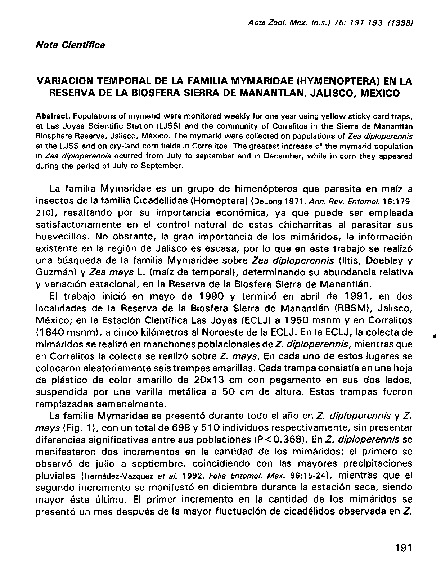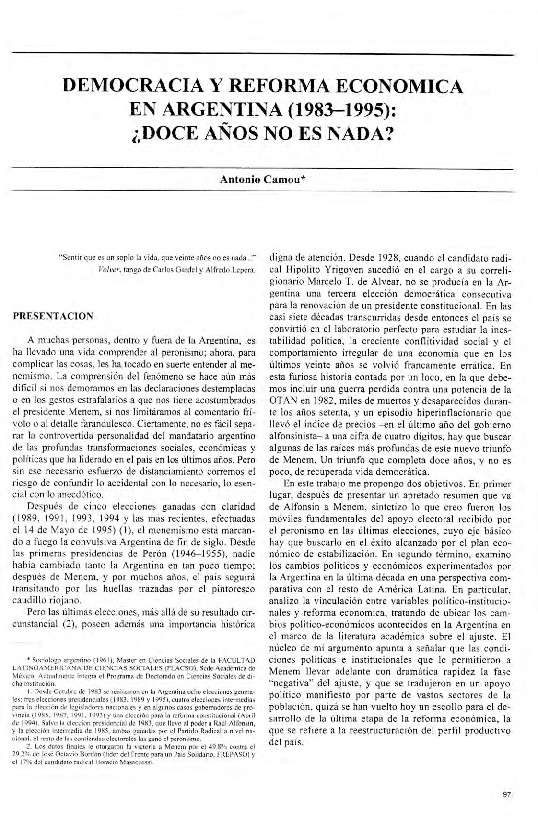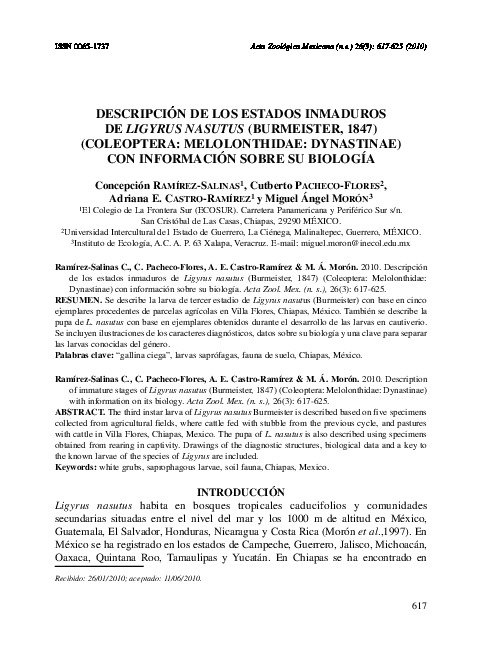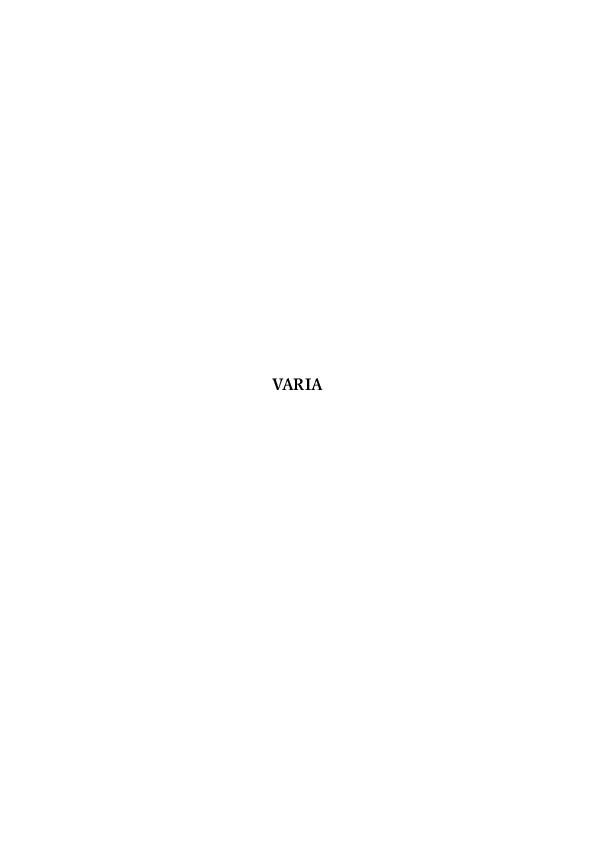Textos
Texto
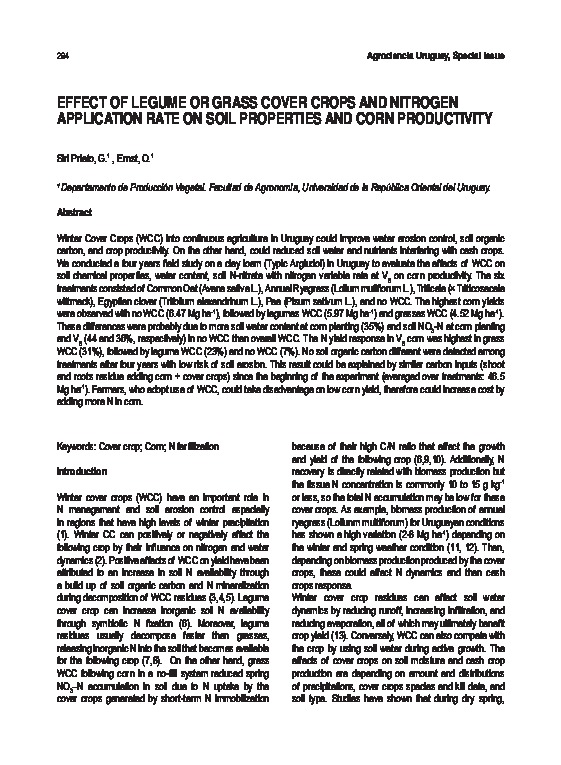
Effect of legume or grass cover crops and nitrogen application rate on soil properties and corn productivity
Descripción
Winter Cover Crops (WCC) into continuous agriculture in Uruguay could improve water erosion control, soil organic carbon, and crop productivity. On the other hand, could reduced soil water and nutrients interfering with cash crops. We conducted a four years fi eld study on a clay loam (Typic Argiudol) in Uruguay to evaluate the effects of WCC on soil chemical properties, water content, soil N-nitrate with nitrogen variable rate at V6 on corn productivity. The six treatments consisted of Common Oat (Avena sativa L.), Annual Ryegrass (Lolium mutifl orum L.), Triticale (× Triticosecale wittmack), Egyptian clover (Trifolium alexandrinum L.), Pea (Pisum sativum L.), and no WCC. The highest corn yields were observed with no WCC (6.47 Mg ha-1), followed by legumes WCC (5.97 Mg ha-1) and grasses WCC (4.52 Mg ha-1). These differences were probably due to more soil water content at corn planting (35%) and soil NO3-N at corn planting and V6 (44 and 36%, respectively) in no WCC than overall WCC. The N yield response in V6 corn was highest in grass WCC (31%), followed by legume WCC (23%) and no WCC (7%). No soil organic carbon different were detected among treatments after four years with low risk of soil erosion. This result could be explained by similar carbon inputs (shoot and roots residue adding corn + cover crops) since the beginning of the experiment (averaged over treatments: 46.5 Mg ha-1). Farmers, who adopt use of WCC, could take disadvantage on low corn yield, therefore could increase cost by adding more N in corn.
Siri Prieto, G. & Ernst, O. (2012) Improvement of the soil carbon sink using cover crops in rainfed olive orchards in semiarid climates. Agrociencia, 16(3), pp. 294-301.
Categorias:
Colecciones:
Recuerda
La cultura y la educación necesitan de tu apoyo activo.
Información del autor
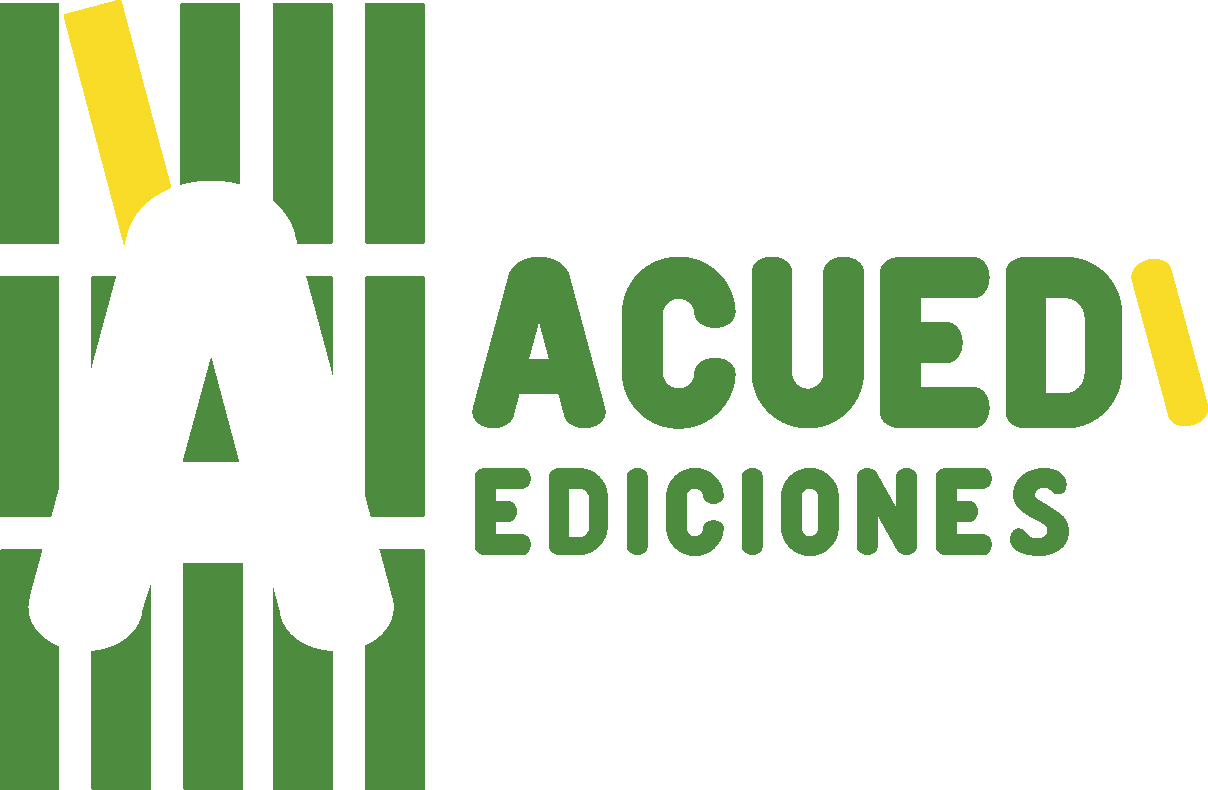
ACUEDI
ACUEDI son las siglas de la Asociación por la Cultura y Educación Digital. Somos una asociación civil sin fines de lucro, con sede en Lima (Perú), fundada en noviembre del 2011. Nuestro principal objetivo es incentivar la lectura y la investigación académica, especialmente dentro de espacios digitales. Para ello hemos diseñado una serie de proyectos, todos ellos relacionados entre sí. Este es nuestro proyecto principal, nuestra Biblioteca DIgital ACUEDI que tiene hasta el momento más de 12 mil textos de acceso gratuito. Como tenemos que financiar este proyecto de algún modo, ya que solo contamos con el apoyo constante y desinteresado de la Fundación M.J. Bustamante de la Fuente, hemos creado otros proyectos como ACUEDI Ediciones, donde publicamos libros impresos y digitales, y la Librería ACUEDI, donde vendemos libros nuestros y de editoriales amigas ya sea mediante redes sociales, mediante esta plataforma, en eventos o en ferias de libros.ACUEDI
